About This eBook
Title Page
Copyright Page
About the Authors
About the Technical Reviewers
Dedications
Acknowledgments
Contents at a Glance
Contents
Icons Used in This Book
Command Syntax Conventions
Introduction
Why Should I Take the CCIE Routing and Switching Written Exam?
CCIE Routing and Switching Written Exam 400-101
About the CCIE Routing and Switching v5.0 Official Cert Exam Guide, Volume 2, Fifth Edition
Book Organization
Book Features
Part I: IP BGP Routing
Chapter 1. Fundamentals of BGP Operations
“Do I Know This Already?” Quiz
Foundation Topics
Building BGP Neighbor Relationships
Internal BGP Neighbors
External BGP Neighbors
Checks Before Becoming BGP Neighbors
BGP Messages and Neighbor States
BGP Message Types
Purposefully Resetting BGP Peer Connections
Building the BGP Table
Injecting Routes/Prefixes into the BGP Table
BGP network Command
Redistributing from an IGP, Static, or Connected Route
Impact of Auto-Summary on Redistributed Routes and the network Command
Manual Summaries and the AS_PATH Path Attribute
Adding Default Routes to BGP
ORIGIN Path Attribute
Advertising BGP Routes to Neighbors
BGP Update Message
Determining the Contents of Updates
Example: Impact of the Decision Process and NEXT_HOP on BGP Updates
Summary of Rules for Routes Advertised in BGP Updates
Building the IP Routing Table
Adding eBGP Routes to the IP Routing Table
Backdoor Routes
Adding iBGP Routes to the IP Routing Table
Using Sync and Redistributing Routes
Disabling Sync and Using BGP on All Routers in an AS
Confederations
Configuring Confederations
Route Reflectors
Multiprotocol BGP
Configuration of Multiprotocol BGP
Foundation Summary
Memory Builders
Fill In Key Tables from Memory
Definitions
Further Reading
Chapter 2. BGP Routing Policies
“Do I Know This Already?” Quiz
Foundation Topics
Route Filtering and Route Summarization
Filtering BGP Updates Based on NLRI
Route Map Rules for NLRI Filtering
Soft Reconfiguration
Comparing BGP Prefix Lists, Distribute Lists, and Route Maps
Filtering Subnets of a Summary Using the aggregate-address Command
Filtering BGP Updates by Matching the AS_PATH PA
The BGP AS_PATH and AS_PATH Segment Types
Using Regular Expressions to Match AS_PATH
Example: Matching AS_PATHs Using AS_PATH Filters
Matching AS_SET and AS_CONFED_SEQ
BGP Path Attributes and the BGP Decision Process
Generic Terms and Characteristics of BGP PAs
The BGP Decision Process
Clarifications of the BGP Decision Process
Three Final Tiebreaker Steps in the BGP Decision Process
Adding Multiple BGP Routes to the IP Routing Table
Mnemonics for Memorizing the Decision Process
Configuring BGP Policies
Background: BGP PAs and Features Used by Routing Policies
Step 1: NEXT_HOP Reachable
Step 2: Administrative Weight
Step 3: Highest Local Preference �⠀䰀伀䌀䄀䰀开倀刀䔀䘀)
Step 4: Choose Between Locally Injected Routes Based on ORIGIN PA
Step 5: Shortest AS_PATH
Removing Private ASNs
AS_PATH Prepending and Route Aggregation
Step 6: Best ORIGIN PA
Step 7: Smallest Multi-Exit Discriminator
Configuring MED: Single Adjacent AS
Configuring MED: Multiple Adjacent Autonomous Systems
The Scope of MED
Step 8: Prefer Neighbor Type eBGP over iBGP
Step 9: Smallest IGP Metric to the NEXT_HOP
The maximum-paths Command and BGP Decision Process Tiebreakers
Step 10: Lowest BGP Router ID of Advertising Router �⠀眀椀琀栀 伀渀攀 䔀砀挀攀瀀琀椀漀渀)
Step 11: Lowest Neighbor ID
The BGP maximum-paths Command
BGP Communities
Matching COMMUNITY with Community Lists
Removing COMMUNITY Values
Filtering NLRIs Using Special COMMUNITY Values
Fast Convergence Enhancements
Fast External Neighbor Loss Detection
Internal Neighbor Loss Detection
EBGP Fast Session Deactivation
Foundation Summary
Memory Builders
Fill In Key Tables from Memory
Definitions
Further Reading
Part II: QoS
Chapter 3. Classification and Marking
“Do I Know This Already?” Quiz
Foundation Topics
Fields That Can Be Marked for QoS Purposes
IP Precedence and DSCP Compared
DSCP Settings and Terminology
Class Selector PHB and DSCP Values
Assured Forwarding PHB and DSCP Values
Expedited Forwarding PHB and DSCP Values
Non-IP Header Marking Fields
Ethernet LAN Class of Service
WAN Marking Fields
Locations for Marking and Matching
Cisco Modular QoS CLI
Mechanics of MQC
Classification Using Class Maps
Using Multiple match Commands
Classification Using NBAR
Classification and Marking Tools
Class-Based Marking �⠀䌀䈀 䴀愀爀欀椀渀最) Configuration
CB Marking Example
CB Marking of CoS and DSCP
Network-Based Application Recognition
CB Marking Design Choices
Marking Using Policers
QoS Pre-Classification
Policy Routing for Marking
AutoQoS
AutoQoS for VoIP
AutoQoS VoIP on Switches
AutoQoS VoIP on Routers
Verifying AutoQoS VoIP
AutoQoS for the Enterprise
Discovering Traffic for AutoQoS Enterprise
Generating the AutoQoS Configuration
Verifying AutoQoS for the Enterprise
Foundation Summary
Memory Builders
Fill In Key Tables from Memory
Definitions
Further Reading
Chapter 4. Congestion Management and Avoidance
“Do I Know This Already?” Quiz
Foundation Topics
Cisco Router Queuing Concepts
Software Queues and Hardware Queues
Queuing on Interfaces Versus Subinterfaces and Virtual Circuits
Comparing Queuing Tools
Queuing Tools: CBWFQ and LLQ
CBWFQ Basic Features and Configuration
Defining and Limiting CBWFQ Bandwidth
Low-Latency Queuing
Defining and Limiting LLQ Bandwidth
LLQ with More Than One Priority Queue
Miscellaneous CBWFQ/LLQ Topics
Queuing Summary
Weighted Random Early Detection
How WRED Weights Packets
WRED Configuration
Modified Deficit Round-Robin
LAN Switch Congestion Management and Avoidance
Cisco Switch Ingress Queuing
Creating a Priority Queue
Cisco 3560 Congestion Avoidance
Cisco 3560 Switch Egress Queuing
Resource Reservation Protocol �⠀刀匀嘀倀)
RSVP Process Overview
Configuring RSVP
Using RSVP for Voice Calls
Foundation Summary
Memory Builders
Fill In Key Tables from Memory
Definitions
Further Reading
Chapter 5. Shaping, Policing, and Link Fragmentation
“Do I Know This Already?” Quiz
Foundation Topics
Traffic-Shaping Concepts
Shaping Terminology
Shaping with an Excess Burst
Underlying Mechanics of Shaping
Generic Traffic Shaping
Class-Based Shaping
Tuning Shaping for Voice Using LLQ and a Small Tc
Configuring Shaping by Bandwidth Percent
CB Shaping to a Peak Rate
Adaptive Shaping
Policing Concepts and Configuration
CB Policing Concepts
Single-Rate, Two-Color Policing �⠀伀渀攀 䈀甀挀欀攀琀)
Single-Rate, Three-Color Policer �⠀吀眀漀 䈀甀挀欀攀琀猀)
Two-Rate, Three-Color Policer �⠀吀眀漀 䈀甀挀欀攀琀猀)
Class-Based Policing Configuration
Single-Rate, Three-Color Policing of All Traffic
Policing a Subset of the Traffic
CB Policing Defaults for Bc and Be
Configuring Dual-Rate Policing
Multi-Action Policing
Policing by Percentage
Committed Access Rate
Hierarchical Queuing Framework �⠀䠀儀䘀)
Flow-Based Fair-Queuing Support in Class-Default
Default Queuing Implementation for Class-Default
Class-Default and Bandwidth
Default Queuing Implementation for Shape Class
Policy Map and Interface Bandwidth
Per-Flow Queue Limit in Fair Queue
Oversubscription Support for Multiple Policies on Logical Interfaces
Shaping on a GRE Tunnel
Nested Policy and Reference Bandwidth for Child-Policy
Handling Traffic Congestion on an Interface Configured with Policy Map
QoS Troubleshooting and Commands
Troubleshooting Slow Application Response
Troubleshooting Voice and Video Problems
Other QoS Troubleshooting Tips
Approaches to Resolving QoS Issues
Foundation Summary
Memory Builders
Fill In Key Tables from Memory
Definitions
Further Reading
Part III: Wide-Area Networks
Chapter 6. Wide-Area Networks
“Do I Know This Already?” Quiz
Foundation Topics
Layer 2 Protocols
HDLC
Point-to-Point Protocol
PPP Link Control Protocol
Basic LCP/PPP Configuration
Multilink PPP
MLP Link Fragmentation and Interleaving
PPP Compression
PPP Layer 2 Payload Compression
Header Compression
PPPoE
Server Configuration
Client Configuration
Authentication
Ethernet WAN
VPLS
Metro-Ethernet
Foundation Summary
Memory Builders
Fill In Key Tables from Memory
Definitions
Further Reading
Part IV: IP Multicast
Chapter 7. Introduction to IP Multicasting
“Do I Know This Already?” Quiz
Foundation Topics
Why Do You Need Multicasting?
Problems with Unicast and Broadcast Methods
How Multicasting Provides a Scalable and Manageable Solution
Multicast IP Addresses
Multicast Address Range and Structure
Well-Known Multicast Addresses
Multicast Addresses for Permanent Groups
Multicast Addresses for Source-Specific Multicast Applications and Protocols
Multicast Addresses for GLOP Addressing
Multicast Addresses for Private Multicast Domains
Multicast Addresses for Transient Groups
Summary of Multicast Address Ranges
Mapping IP Multicast Addresses to MAC Addresses
Managing Distribution of Multicast Traffic with IGMP
Joining a Group
Internet Group Management Protocol
IGMP Version 2
IGMPv2 Host Membership Query Functions
IGMPv2 Host Membership Report Functions
IGMPv2 Solicited Host Membership Report
IGMPv2 Unsolicited Host Membership Report
IGMPv2 Leave Group and Group-Specific Query Messages
IGMPv2 Querier
IGMPv2 Timers
IGMP Version 3
IGMPv1 and IGMPv2 Interoperability
IGMPv2 Host and IGMPv1 Routers
IGMPv1 Host and IGMPv2 Routers
Comparison of IGMPv1, IGMPv2, and IGMPv3
LAN Multicast Optimizations
Cisco Group Management Protocol
IGMP Snooping
Router-Port Group Management Protocol
IGMP Filtering
IGMP Proxy
Foundation Summary
Memory Builders
Fill In Key Tables from Memory
Definitions
Further Reading
References in This Chapter
Chapter 8. IP Multicast Routing
“Do I Know This Already?” Quiz
Foundation Topics
Multicast Routing Basics
Overview of Multicast Routing Protocols
Multicast Forwarding Using Dense Mode
Reverse Path Forwarding Check
Multicast Forwarding Using Sparse Mode
Multicast Scoping
TTL Scoping
Administrative Scoping
Dense-Mode Routing Protocols
Operation of Protocol Independent Multicast Dense Mode
Forming PIM Adjacencies Using PIM Hello Messages
Source-Based Distribution Trees
Prune Message
PIM-DM: Reacting to a Failed Link
Rules for Pruning
Steady-State Operation and the State Refresh Message
Graft Message
LAN-Specific Issues with PIM-DM and PIM-SM
Prune Override
Assert Message
Designated Router
Summary of PIM-DM Messages
Distance Vector Multicast Routing Protocol
Multicast Open Shortest Path First
Sparse-Mode Routing Protocols
Operation of Protocol Independent Multicast Sparse Mode
Similarities Between PIM-DM and PIM-SM
Sources Sending Packets to the Rendezvous Point
Joining the Shared Tree
Completion of the Source Registration Process
Shared Distribution Tree
Steady-State Operation by Continuing to Send Joins
Examining the RP’s Multicast Routing Table
Shortest-Path Tree Switchover
Pruning from the Shared Tree
Dynamically Finding RPs and Using Redundant RPs
Dynamically Finding the RP Using Auto-RP
Dynamically Finding the RP Using BSR
Anycast RP with MSDP
Interdomain Multicast Routing with MSDP
Summary: Finding the RP
Bidirectional PIM
Comparison of PIM-DM and PIM-SM
Source-Specific Multicast
Implementing IPv6 Multicast PIM
Designated Priority Manipulation
PIM6 Hello Interval
IPv6 Sparse-Mode Multicast
IPv6 Static RP
IPv6 BSR
Multicast Listener Discovery �⠀䴀䰀䐀)
Embedded RP
Foundation Summary
Memory Builders
Fill In Key Tables from Memory
Definitions
Further Reading
Part V: Security
Chapter 9. Device and Network Security
“Do I Know This Already?” Quiz
Foundation Topics
Router and Switch Device Security
Simple Password Protection for the CLI
Better Protection of Enable and Username Passwords
Using Secure Shell Protocol
User Mode and Privileged Mode AAA Authentication
Using a Default Set of Authentication Methods
Using Multiple Authentication Methods
Groups of AAA Servers
Overriding the Defaults for Login Security
PPP Security
Layer 2 Security
Switch Security Best Practices for Unused and User Ports
Port Security
Dynamic ARP Inspection
DHCP Snooping
IP Source Guard
802.1X Authentication Using EAP
Storm Control
General Layer 2 Security Recommendations
Layer 3 Security
IP Access Control List Review
ACL Rule Summary
Wildcard Masks
General Layer 3 Security Considerations
Smurf Attacks, Directed Broadcasts, and RPF Checks
Inappropriate IP Addresses
TCP SYN Flood, the Established Bit, and TCP Intercept
Classic Cisco IOS Firewall
TCP Versus UDP with CBAC
Cisco IOS Firewall Protocol Support
Cisco IOS Firewall Caveats
Cisco IOS Firewall Configuration Steps
Cisco IOS Zone-Based Firewall
Control-Plane Policing
Preparing for CoPP Implementation
Implementing CoPP
Dynamic Multipoint VPN
Step 1: Basic Configuration of IP Addresses
Step 2: GRE Multipoint Tunnel Configuration on All Routers �⠀昀漀爀 匀瀀漀欀攀ⴀ琀漀ⴀ匀瀀漀欀攀 䌀漀渀渀攀挀琀椀瘀椀琀礀)
Step 3: Configure IPsec to Encrypt mGRE Tunnels
Step 4: DMVPN Routing Configuration
IPv6 First Hop Security
First Hop Security for IPv6
Link Operations
End Node Security Enforcement
First Hop Switch Security Enforcement
Last Router Security Enforcement
ICMPv6 and Neighbor Discovery Protocol
Secure Neighbor Discovery �⠀匀攀一䐀)
Securing at the First Hop
RA Guard
DHCPv6 Guard
DHCPv6 Guard and the Binding Database
IPv6 Device Tracking
IPv6 Neighbor Discovery Inspection
IPv6 Source Guard
Port Access Control Lists �⠀倀䄀䌀䰀)
Foundation Summary
Memory Builders
Fill In Key Tables from Memory
Definitions
Further Reading
Chapter 10. Tunneling Technologies
“Do I Know This Already?” Quiz
Foundation Topics
GRE Tunnels
Dynamic Multipoint VPN Tunnels
DMVPN Operation
DMVPN Components
DMVPN Operation
IPv6 Tunneling and Related Techniques
Tunneling Overview
Manually Configured Tunnels
Automatic IPv4-Compatible Tunnels
IPv6-over-IPv4 GRE Tunnels
Automatic 6to4 Tunnels
ISATAP Tunnels
SLAAC and DHCPv6
NAT-PT
NAT ALG
NAT64
Layer 2 VPNs
Tagged Mode
Raw Mode
Layer 2 Tunneling Protocol �⠀䰀㈀吀倀瘀㌀)
AToM �⠀䄀渀礀 吀爀愀渀猀瀀漀爀琀 漀瘀攀爀 䴀倀䰀匀)
Virtual Private LAN Services �⠀嘀倀䰀匀)
Overlay Transport Virtualization �⠀伀吀嘀)
GET VPN
Foundation Summary
Memory Builders
Definitions
Part VI: Multiprotocol Label Switching �⠀䴀倀䰀匀)
Chapter 11. Multiprotocol Label Switching
“Do I Know This Already?” Quiz
Foundation Topics
MPLS Unicast IP Forwarding
MPLS IP Forwarding: Data Plane
CEF Review
Overview of MPLS Unicast IP Forwarding
MPLS Forwarding Using the FIB and LFIB
The MPLS Header and Label
The MPLS TTL Field and MPLS TTL Propagation
MPLS IP Forwarding: Control Plane
MPLS LDP Basics
The MPLS Label Information Base Feeding the FIB and LFIB
Examples of FIB and LFIB Entries
Label Distribution Protocol Reference
MPLS VPNs
The Problem: Duplicate Customer Address Ranges
The Solution: MPLS VPNs
MPLS VPN Control Plane
Virtual Routing and Forwarding Tables
MP-BGP and Route Distinguishers
Route Targets
Overlapping VPNs
MPLS VPN Configuration
Configuring the VRF and Associated Interfaces
Configuring the IGP Between PE and CE
Configuring Redistribution Between PE-CE IGP and MP-BGP
Configuring MP-BGP Between PEs
MPLS VPN Data Plane
Building the �⠀䤀渀渀攀爀) VPN Label
Creating LFIB Entries to Forward Packets to the Egress PE
Creating VRF FIB Entries for the Ingress PE
Penultimate Hop Popping
Other MPLS Applications
Implement Multi-VRF Customer Edge �⠀嘀刀䘀 䰀椀琀攀)
VRF Lite, Without MPLS
VRF Lite with MPLS
Foundation Summary
Memory Builders
Fill In Key Tables from Memory
Definitions
Further Reading
Part VII: Final Preparation
Chapter 12. Final Preparation
Tools for Final Preparation
Pearson Cert Practice Test Engine and Questions on the CD
Install the Software from the CD
Activate and Download the Practice Exam
Activating Other Exams
Premium Edition
The Cisco Learning Network
Memory Tables
Chapter-Ending Review Tools
Suggested Plan for Final Review/Study
Using the Exam Engine
Summary
Part VIII: Appendixes
Appendix A. Answers to the “Do I Know This Already?” Quizzes
Chapter 1
Chapter 2
Chapter 3
Chapter 4
Chapter 5
Chapter 6
Chapter 7
Chapter 8
Chapter 9
Chapter 10
Chapter 11
Appendix B. CCIE Exam Updates
Index
CD-Only
Appendix C. Decimal to Binary Conversion Table
Appendix D. IP Addressing Practice
Subnetting Practice
25 Subnetting Questions
Suggestions on How to Attack the Problem
Question 1: Answer
Question 2: Answer
Question 3: Answer
Question 4: Answer
Question 5: Answer
Question 6: Answer
Question 7: Answer
Question 8: Answer
Question 9: Answer
Question 10: Answer
Question 11: Answer
Question 12: Answer
Question 13: Answer
Question 14: Answer
Question 15: Answer
Question 16: Answer
Question 17: Answer
Question 18: Answer
Question 19: Answer
Question 20: Answer
Question 21: Answer
Question 22: Answer
Question 23: Answer
Question 24: Answer
Question 25: Answer
Discovering All Subnets When Using SLSM: 13 Questions
Question 1: Answer
Question 2: Answer
Question 3: Answer
Question 4: Answer
Question 5: Answer
Question 6: Answer
Question 7: Answer
Question 8: Answer
Question 9: Answer
Question 10: Answer
Question 11: Answer
Question 12: Answer
Question 13: Answer
Discovering the Smallest Inclusive Summary Route: 10 Questions
Question 1: Answer
Question 2: Answer
Question 3: Answer
Question 4: Answer
Question 5: Answer
Question 6: Answer
Question 7: Answer
Question 8: Answer
Question 9: Answer
Question 10: Answer
Discovering the Smallest Exclusive Summary Routes: 5 Questions
Question 1: Answer
Question 2: Answer
Question 3: Answer
Question 4: Answer
Question 5: Answer
Appendix E. Key Tables for CCIE Study
Chapter 1
Chapter 2
Chapter 3
Chapter 4
Chapter 5
Chapter 6
Chapter 7
Chapter 8
Chapter 9
Chapter 11
Appendix F. Solutions for Key Tables for CCIE Study
Chapter 1
Chapter 2
Chapter 3
Chapter 4
Chapter 5
Chapter 6
Chapter 7
Chapter 8
Chapter 9
Chapter 11
Glossary
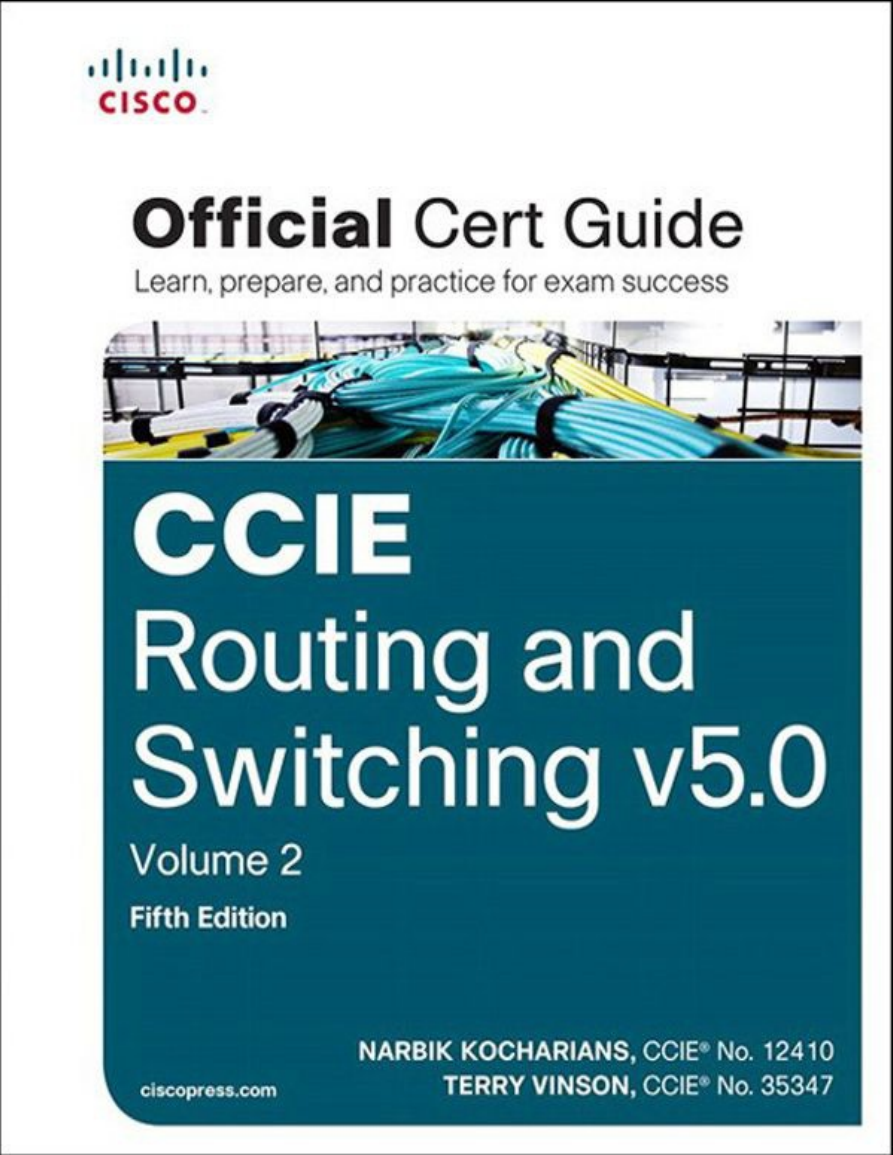
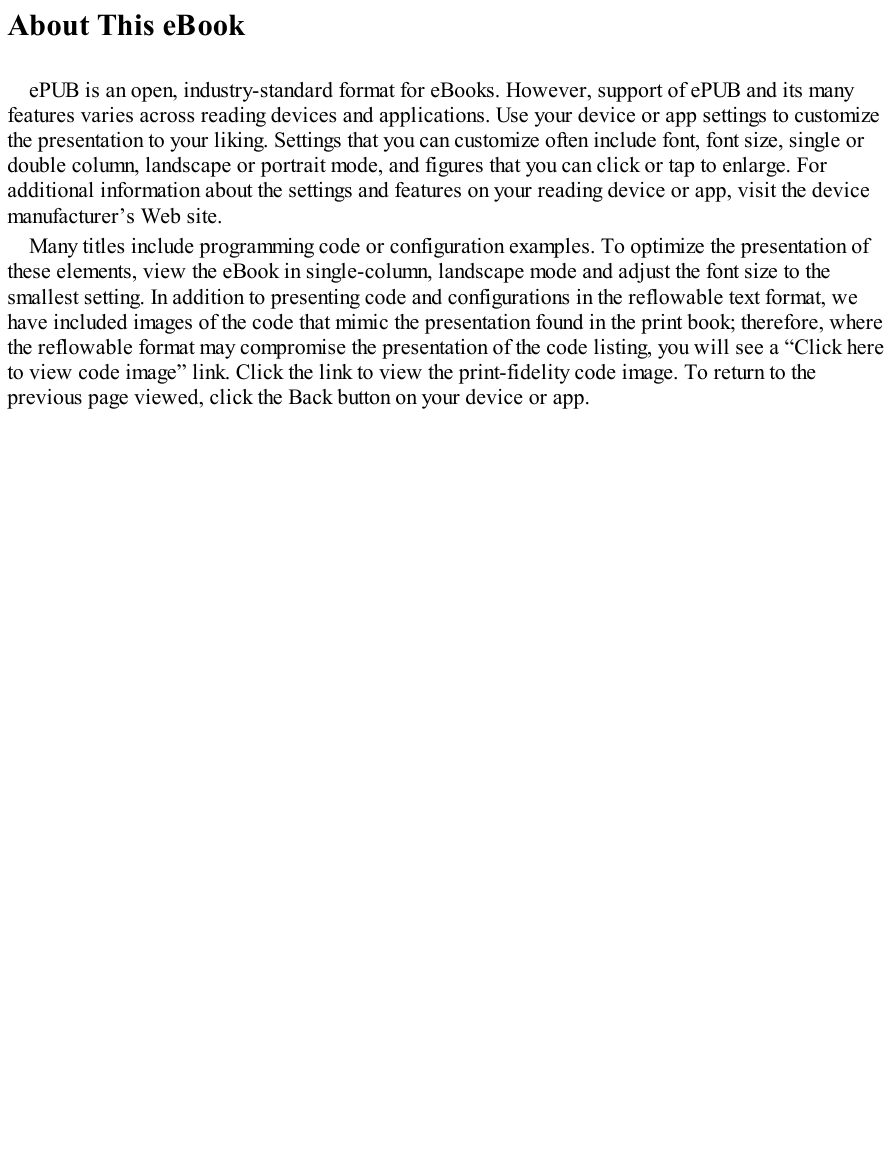
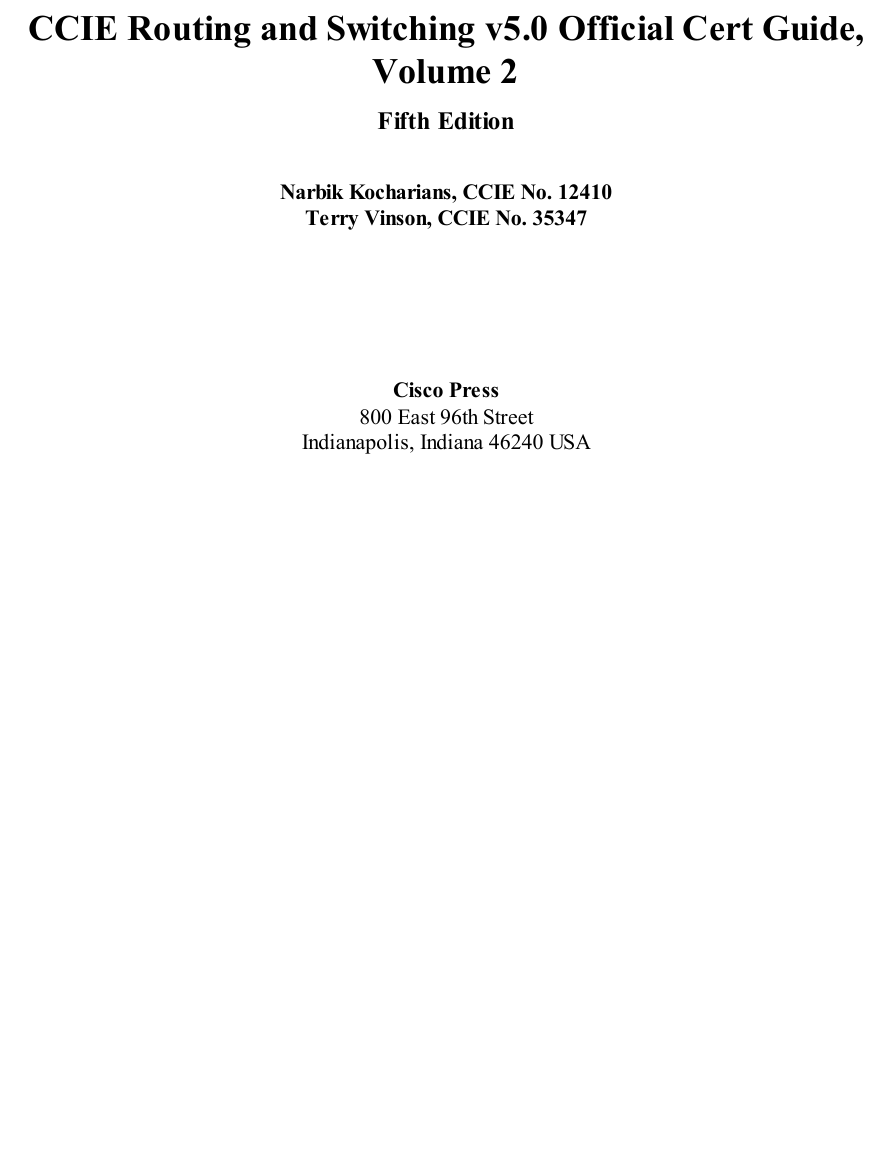
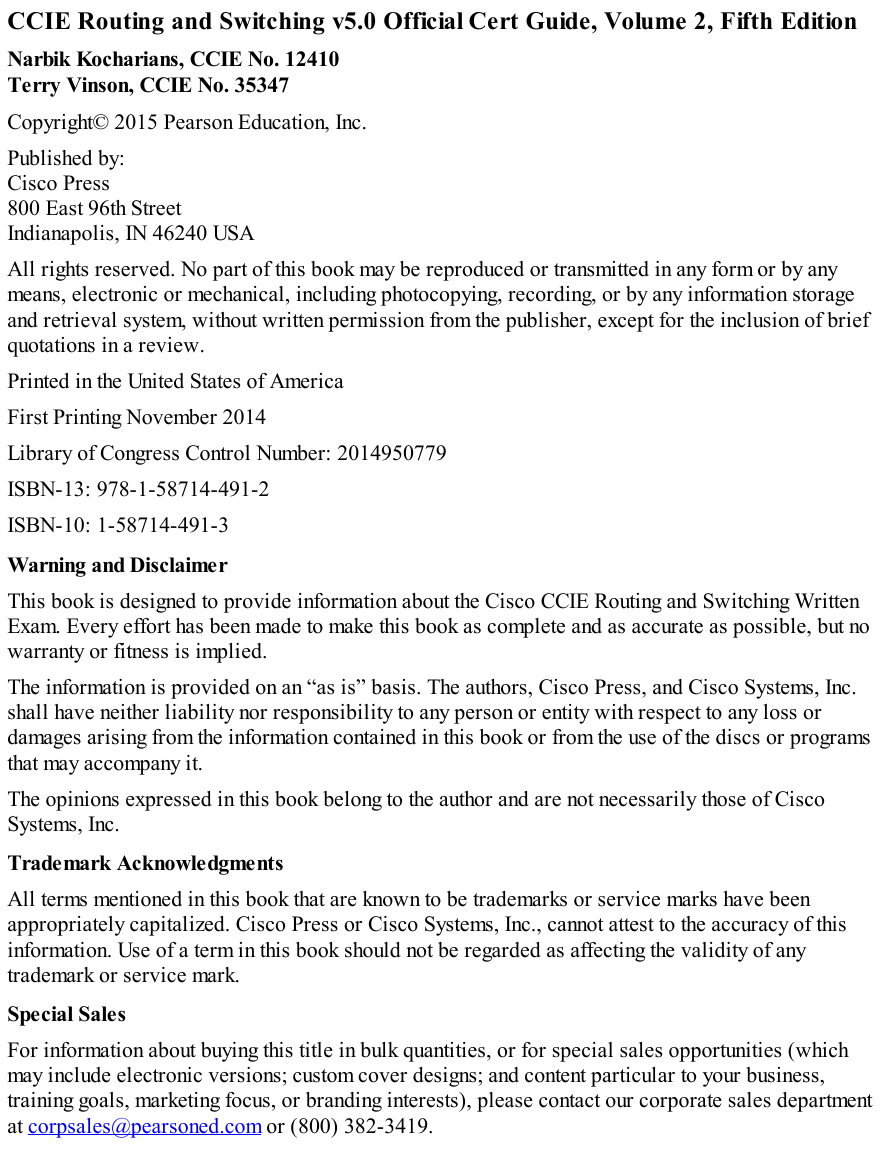
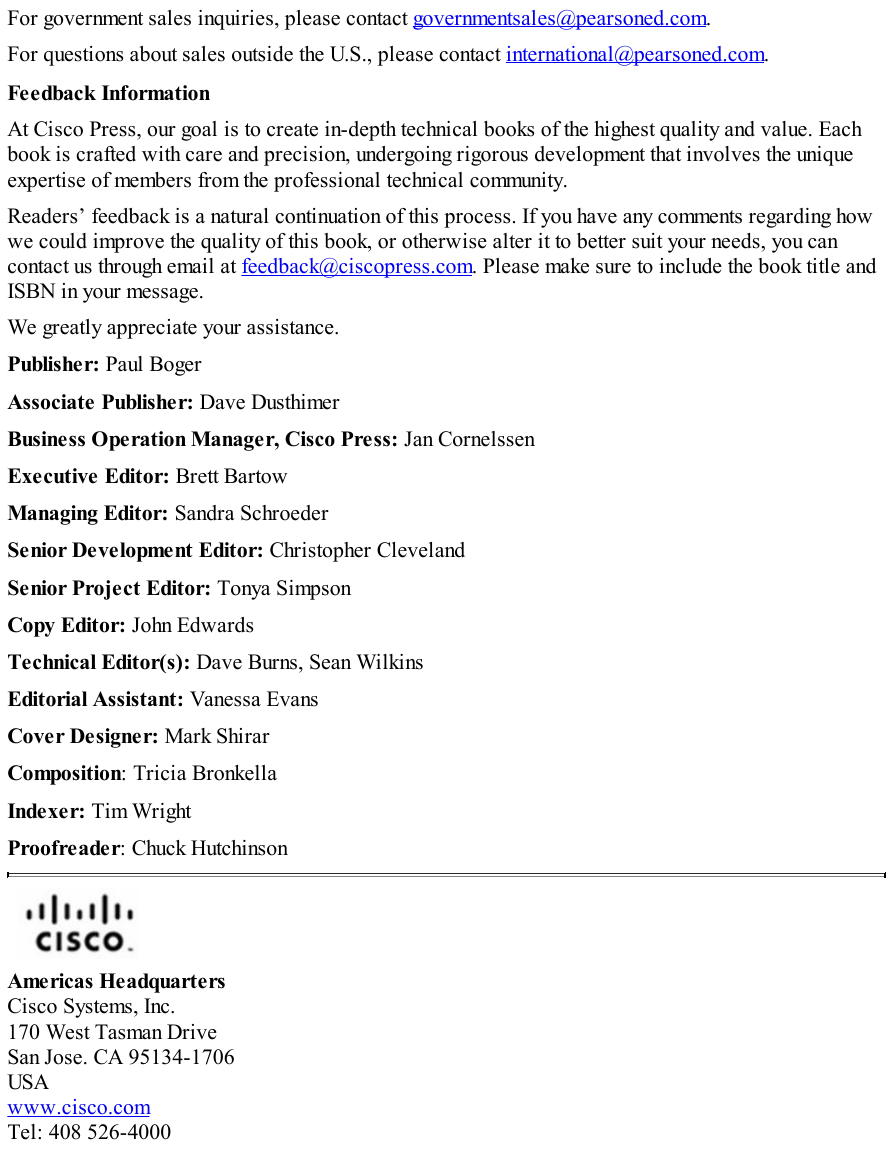
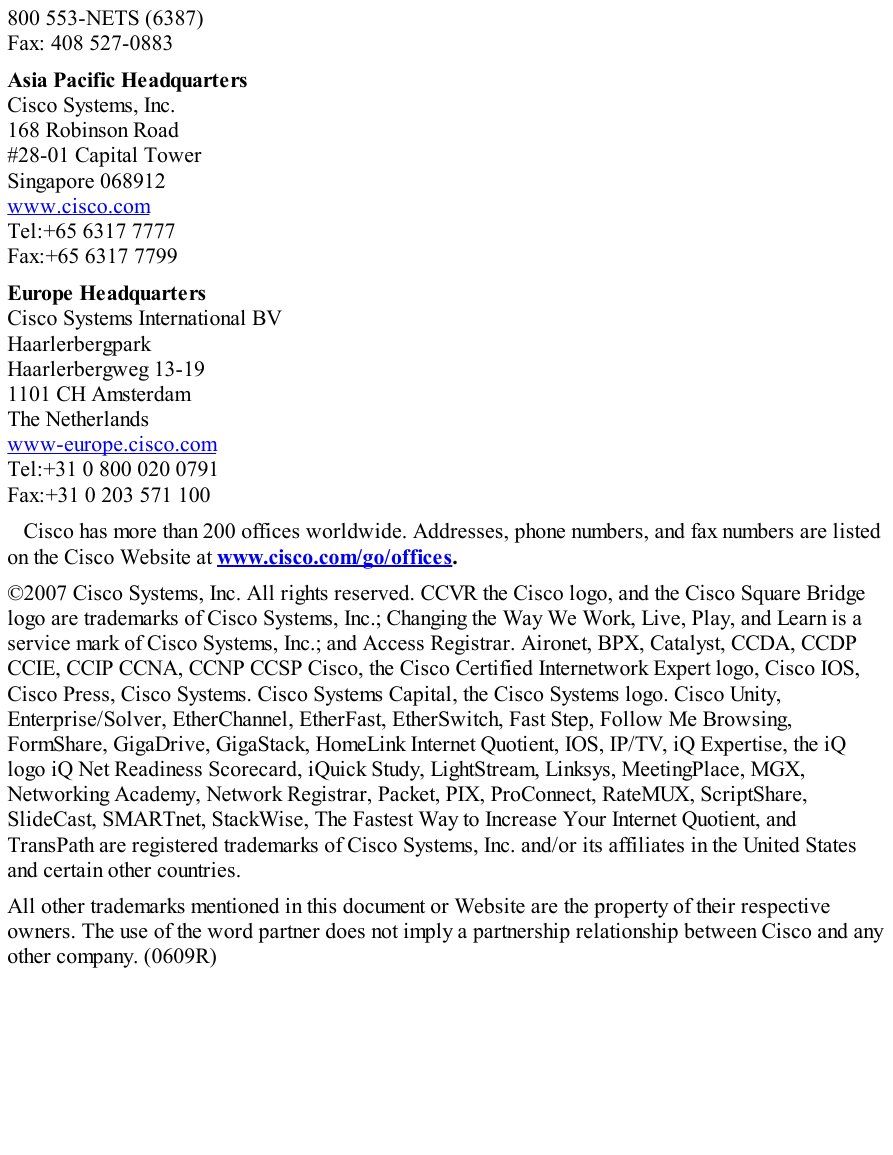
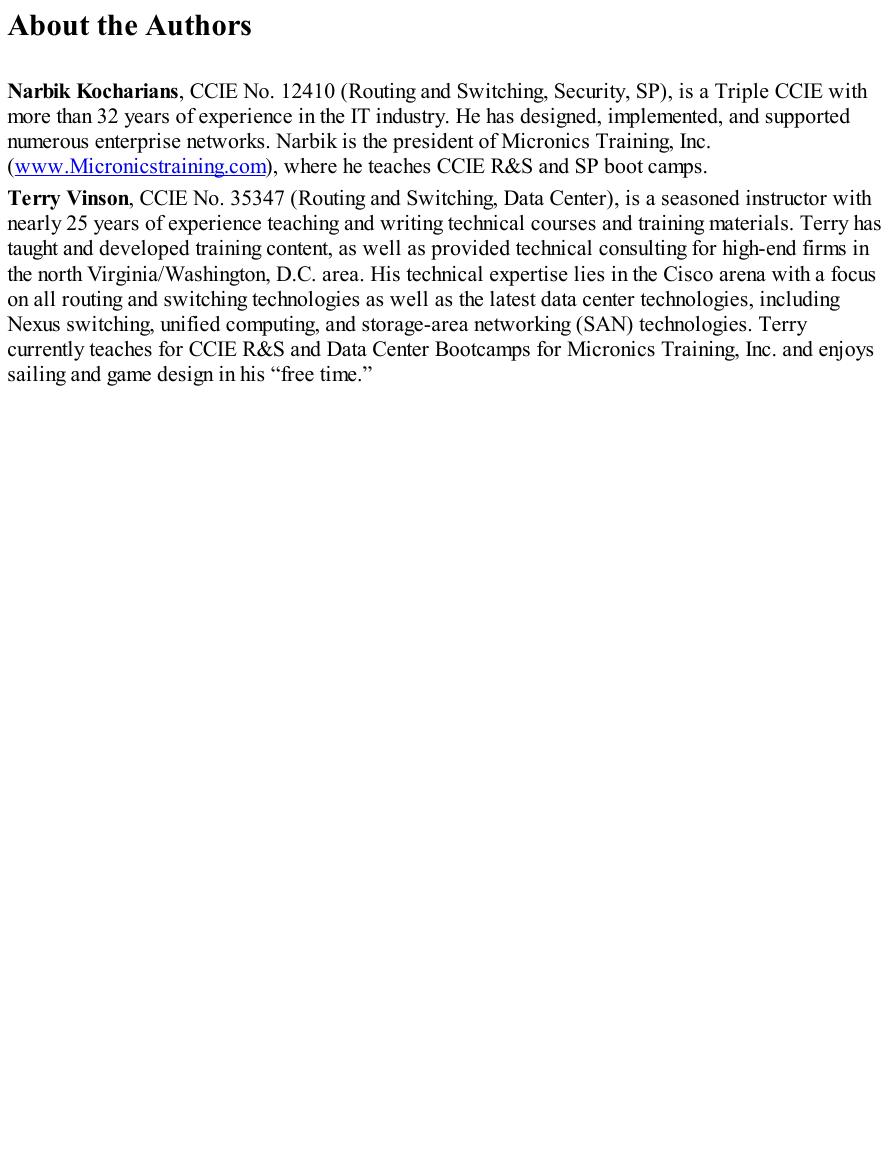
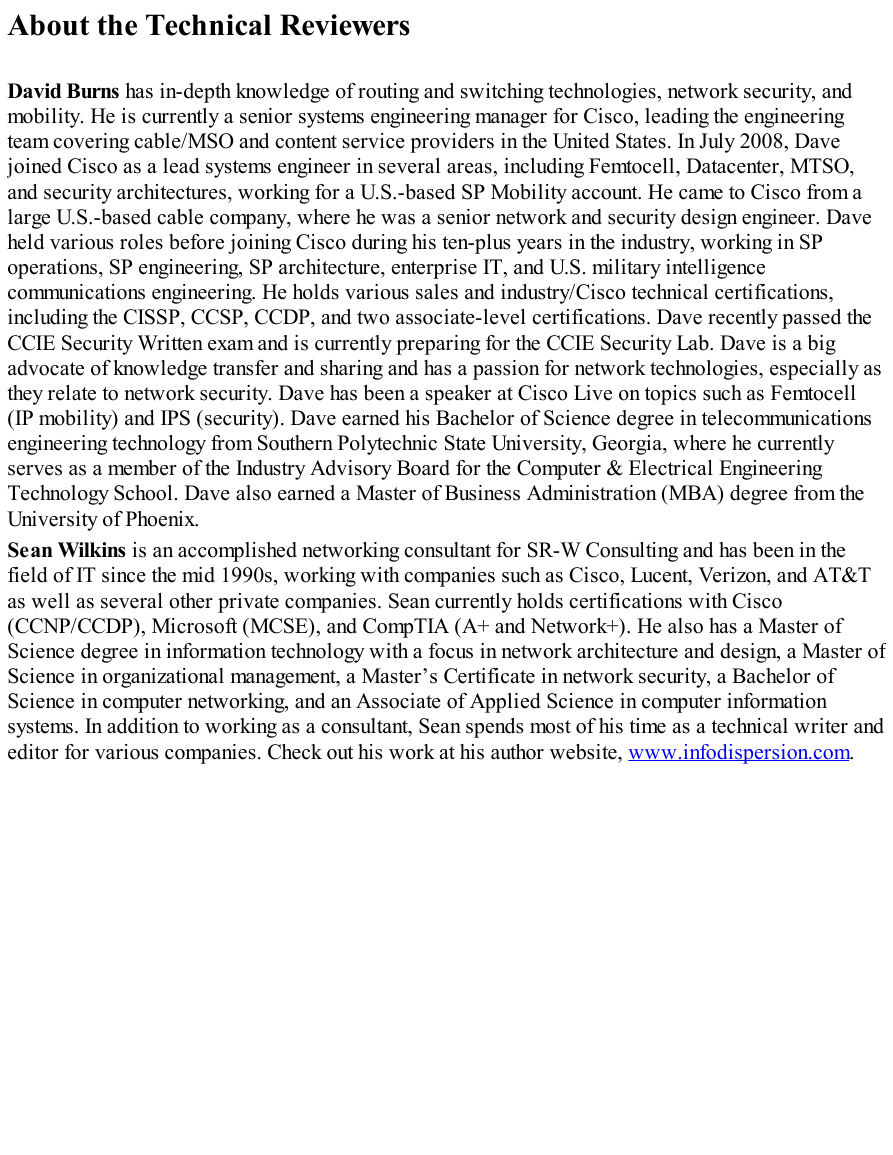








 2023年江西萍乡中考道德与法治真题及答案.doc
2023年江西萍乡中考道德与法治真题及答案.doc 2012年重庆南川中考生物真题及答案.doc
2012年重庆南川中考生物真题及答案.doc 2013年江西师范大学地理学综合及文艺理论基础考研真题.doc
2013年江西师范大学地理学综合及文艺理论基础考研真题.doc 2020年四川甘孜小升初语文真题及答案I卷.doc
2020年四川甘孜小升初语文真题及答案I卷.doc 2020年注册岩土工程师专业基础考试真题及答案.doc
2020年注册岩土工程师专业基础考试真题及答案.doc 2023-2024学年福建省厦门市九年级上学期数学月考试题及答案.doc
2023-2024学年福建省厦门市九年级上学期数学月考试题及答案.doc 2021-2022学年辽宁省沈阳市大东区九年级上学期语文期末试题及答案.doc
2021-2022学年辽宁省沈阳市大东区九年级上学期语文期末试题及答案.doc 2022-2023学年北京东城区初三第一学期物理期末试卷及答案.doc
2022-2023学年北京东城区初三第一学期物理期末试卷及答案.doc 2018上半年江西教师资格初中地理学科知识与教学能力真题及答案.doc
2018上半年江西教师资格初中地理学科知识与教学能力真题及答案.doc 2012年河北国家公务员申论考试真题及答案-省级.doc
2012年河北国家公务员申论考试真题及答案-省级.doc 2020-2021学年江苏省扬州市江都区邵樊片九年级上学期数学第一次质量检测试题及答案.doc
2020-2021学年江苏省扬州市江都区邵樊片九年级上学期数学第一次质量检测试题及答案.doc 2022下半年黑龙江教师资格证中学综合素质真题及答案.doc
2022下半年黑龙江教师资格证中学综合素质真题及答案.doc